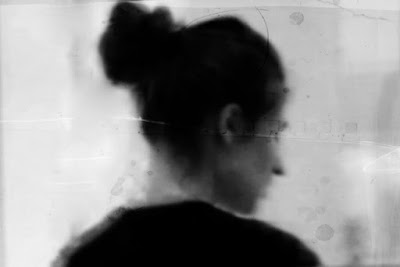Psychology 101 : Adrift in Theory
(reposted from Friday, May 27, 2011)
Wolfgang Kohler's ape, Sultan, snaps together two sticks
and snags a banana from the ceiling of his cage.
The hole in Wolfgang's theory
is greater than the sum of its parts.
Pavlov's dogs drool to the tintinnabulation of bells,
happy they won't be rocketed into space for at least 40 years.
Fred Skinner's pigeons play ping pong for food pellets during the day,
launder money at night in the school's photography lab.
John B. Watson, Behaviorism's father, beds down his lab assistant
and is given his walking papers. He stumbles into advertising
and rises to VP writing copy for cigarette ads.
One of his grad students, Mary Cover Jones, counterconditions
four-year-old Peter's fear of animals using scoops of ice cream.
She sells her idea to Ben and Jerry.
Sigmund Freud smokes cigars, collects Egyptian artifacts,
wears out 306 couches, bifurcates humans
into those who wish for a penis and those who fear for their penis.
He sees no happy medium.
Clifford Beers jumps out of a fourth floor window into a mud puddle,
foiling his suicide attempt and priming his pen for a "Mind That Found Itself,"
while Gustav Theodor Fechner's opus "The Mental Life Of Flowers"
is too much too soon.
Harry Harlow tricks rhesus monkeys into falling in love with stuffed animals.
They hide his booze, sending him over the edge of a visual cliff.
Alfred Binet puts together a test to measure intelligence.
He should have stuck to law.
Hermann Rorschach spills a bottle of ink and markets his accident
for countless James Joyce wannabes.
A stick of dynamite drives a crowbar through Phineas Gage's frontal lobe.
He becomes a sideshow sensation
and prefrontal lobotomies become the therapy of choice
for society's square pegs.
Ugo Cerletti and Lucio Bini compare notes with Mary Shelley,
use an electric current to induce epileptic seizures in patients with mental illness.
Erik Erikson studies art, comes to America as an art therapist,
and promptly loses his identity.
Philippe Pinel unchains the insane at La Salpetriere;
they join SAG, and get bit parts in J. L. Moreno's psychodrama, "King of Hearts."
R. D. Laing maintains that the world, not people, is mad,
drops acid with patients, dies of a heart attack while playing tennis in Saint Tropez.
Tommy Szasz argues that mental illness is a destructive social construct, a myth
and nothing more (or less) than “problems in living.”
Carl Jung has a midlife crisis and explores the occult;
Alfred Adler strives for superiority; Abraham Maslow actualizes
himself in full view; Tom Harris assures us we're OK.
The sixty-minute hour turns out to be fifty-minutes long.
 |
| Philippe Pinel unchains the insane at La Salpetriere |















































